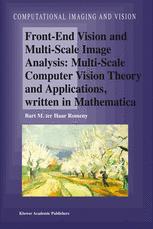

Most ebook files are in PDF format, so you can easily read them using various software such as Foxit Reader or directly on the Google Chrome browser.
Some ebook files are released by publishers in other formats such as .awz, .mobi, .epub, .fb2, etc. You may need to install specific software to read these formats on mobile/PC, such as Calibre.
Please read the tutorial at this link: https://ebookbell.com/faq
We offer FREE conversion to the popular formats you request; however, this may take some time. Therefore, right after payment, please email us, and we will try to provide the service as quickly as possible.
For some exceptional file formats or broken links (if any), please refrain from opening any disputes. Instead, email us first, and we will try to assist within a maximum of 6 hours.
EbookBell Team

4.3
68 reviewsMany approaches have been proposed to solve the problem of finding the optic flow field of an image sequence. Three major classes of optic flow computation techniques can discriminated (see for a good overview Beauchemin and Barron IBeauchemin19951): gradient based (or differential) methods; phase based (or frequency domain) methods; correlation based (or area) methods; feature point (or sparse data) tracking methods; In this chapter we compute the optic flow as a dense optic flow field with a multi scale differential method. The method, originally proposed by Florack and Nielsen [Florack1998a] is known as the Multiscale Optic Flow Constrain Equation (MOFCE). This is a scale space version of the well known computer vision implementation of the optic flow constraint equation, as originally proposed by Horn and Schunck [Horn1981]. This scale space variation, as usual, consists of the introduction of the aperture of the observation in the process. The application to stereo has been described by Maas et al. [Maas 1995a, Maas 1996a]. Of course, difficulties arise when structure emerges or disappears, such as with occlusion, cloud formation etc. Then knowledge is needed about the processes and objects involved. In this chapter we focus on the scale space approach to the local measurement of optic flow, as we may expect the visual front end to do. 17. 2 Motion detection with pairs of receptive fields As a biologically motivated start, we begin with discussing some neurophysiological findings in the visual system with respect to motion detection.